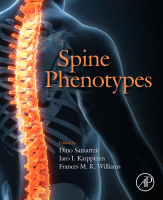Physical Address
304 North Cardinal St.
Dorchester Center, MA 02124

Key points Global spinal balance is equally important as it is a dynamic process that includes the spine along with compensatory mechanisms consisting of the hips, and ankles. Current commonly used spinal measurements include cervical lordosis, thoracic kyphosis, and lumbar…

Key points Erector spinae, lumbar multifidus, quadratus lumborum, and psoas major are commonly investigated paraspinal muscles. Magnetic resonance imaging and computed tomography provide high-quality muscle images for the quantification of muscle morphometry, while ultrasonography is a low-cost noninvasive method capturing…

Key Points Pathologic changes seen in facet joint degeneration include fibrillation, joint space narrowing, articular cartilage thinning, subchondral bone sclerosis, osteophytosis, and development of juxta-facet cysts. Risk factors for facet joint degeneration include lower spinal level, increasing age, sagittal orientation,…

Key points Lumbar spinal stenosis is a complex disease with a plethora of clinical and imaging phenotypes. Developmental lumbar spinal stenosis is caused by mal-development of pedicles and posterior elements leading to narrowed bony spinal canals, and these patients are…

Key points Ossification of the posterior longitudinal ligament (OPLL) is a hyperostotic condition of the spine associated with severe neurologic deficits. The incidence is higher in East Asians. OPLL is a multifactorial disease caused by a combination of environmental and…

Key points Modic changes are subchondral and vertebral bone marrow changes in conjunction with intervertebral disc degeneration, and they are classified into three categories (types 1, 2, and 3) based on magnetic resonance imaging appearance. Modic changes, especially Modic type…

Key points The vertebral endplate is the key regulator of disc nutrient and oxygen transport. The endplate is composed of an inner bony and an outer cartilaginous layer in relation to the vertebra. Vertebral endplates are innervated so represent an…

Key points High-intensity zones (HIZs) represent a hyperintense signal on T2-weighted MRI in the region of the annulus fibrosus and can be used to represent annular tears. HIZs have variable biomechanics, epidemiology, and risk factors and are associated with or…

Key points Intervertebral disc displacement is not a “disease,” but is a component of many variations of disorders of the spine. The displaced disc material and the effects it creates must be carefully assessed and its origin sought by clinical…

Key points Disc space narrowing and osteophyte formation are features of the general spine condition known as intervertebral disc (IVD) degeneration IVD degeneration is an age-related condition IVD degeneration is highly heritable The burden of IVD degeneration predicts the likelihood…